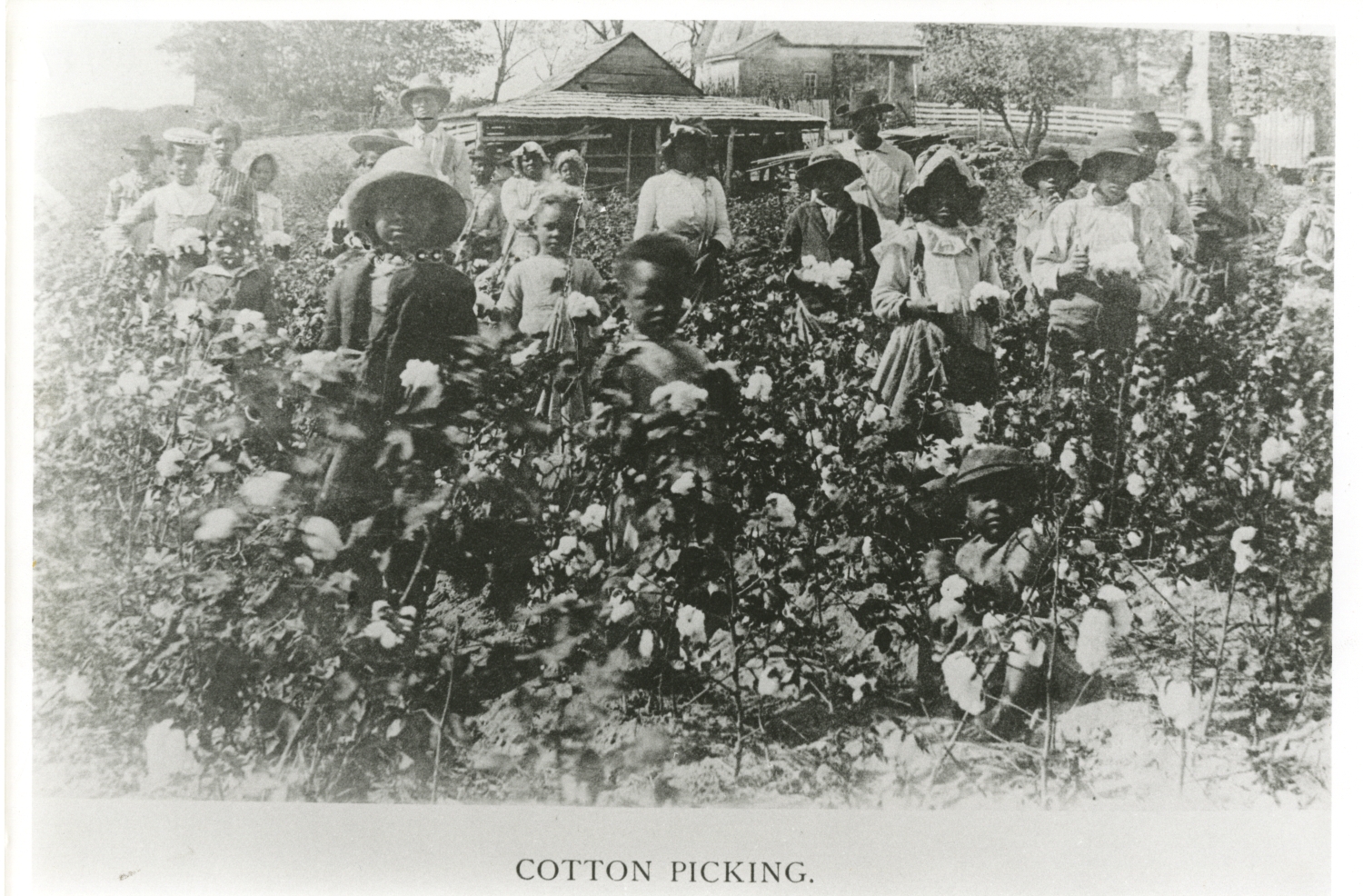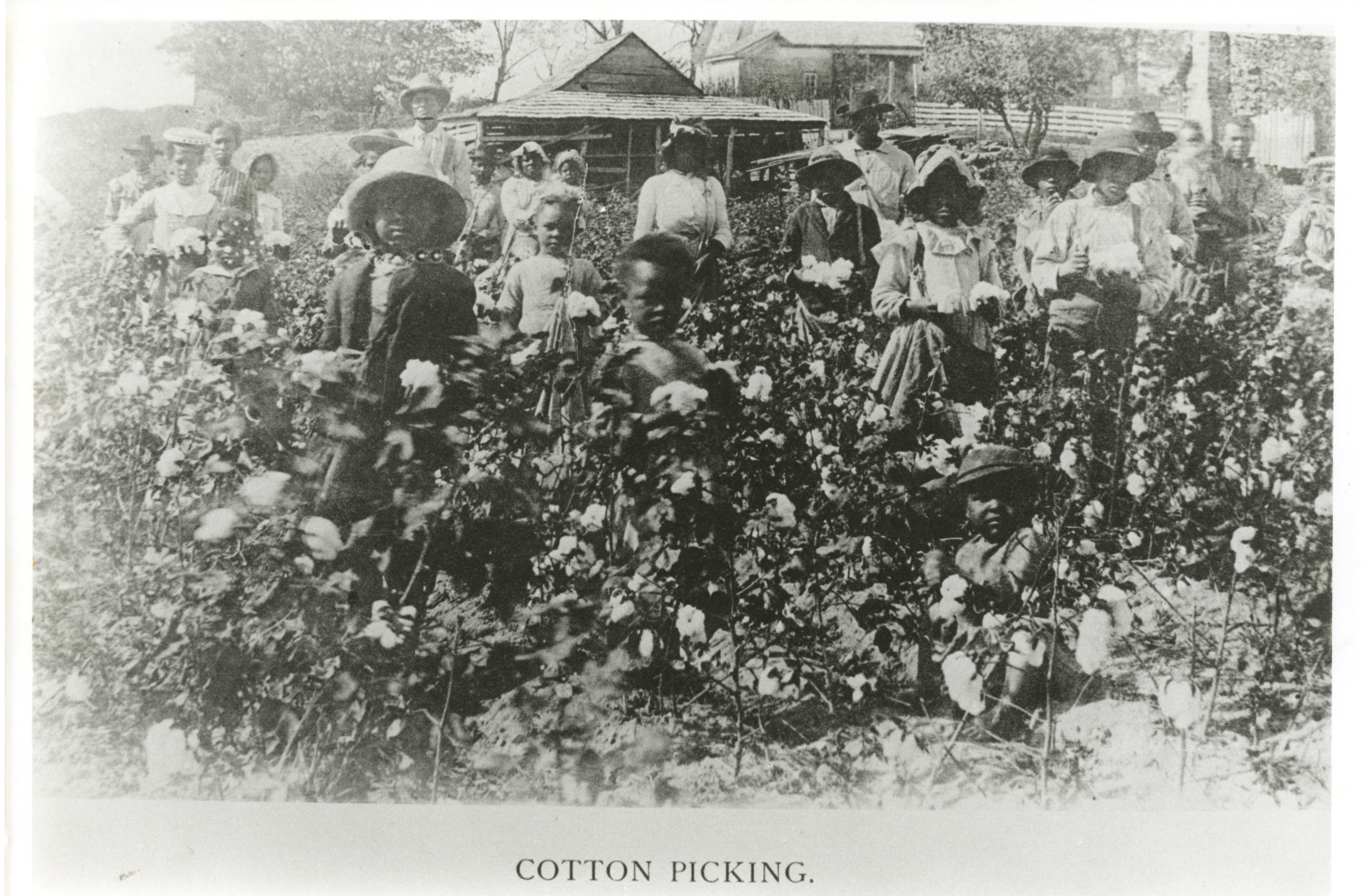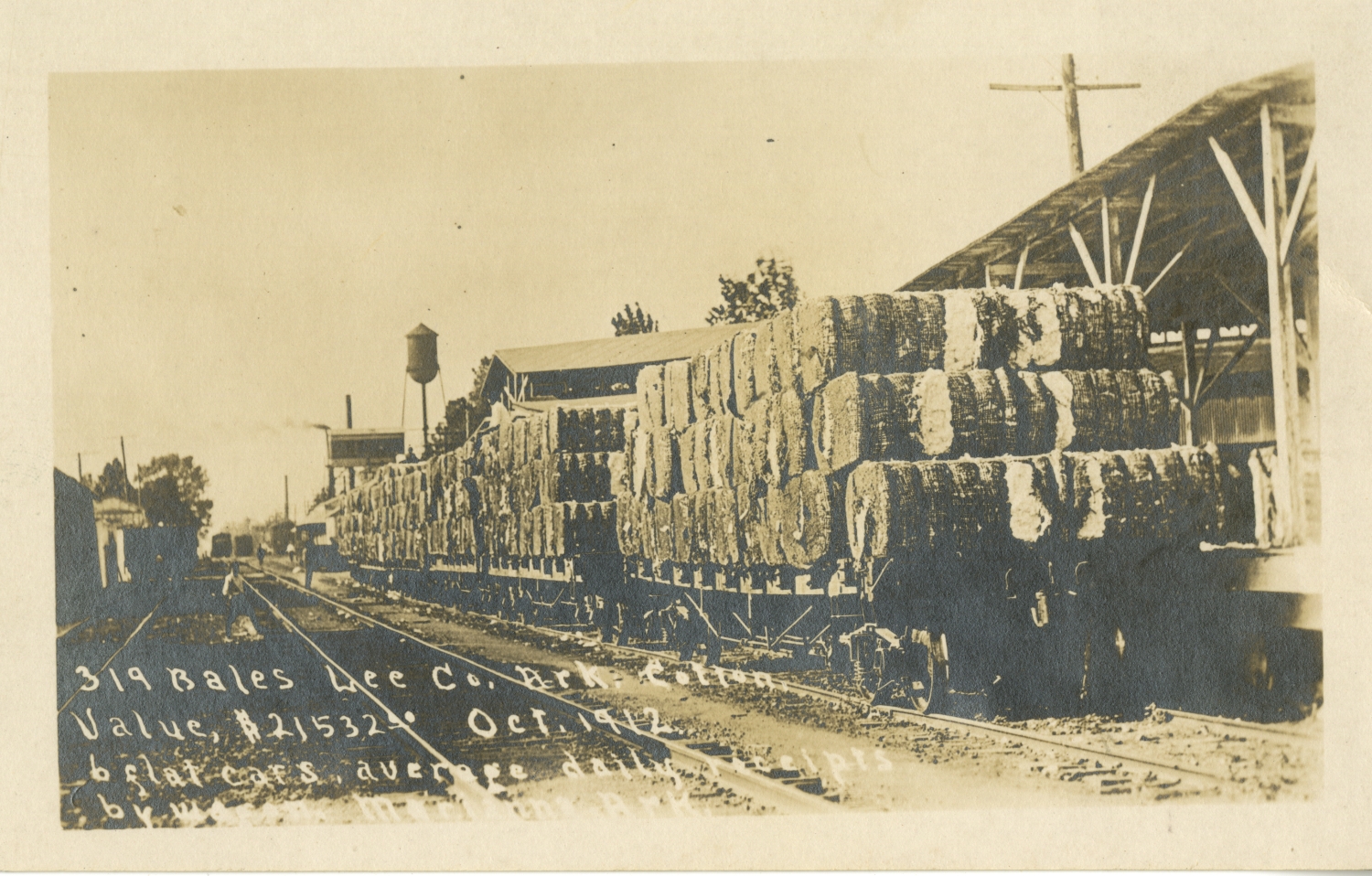Introduction
Cotton has been one of the most important agricultural crops in the history of the US economy. After the invention of the cotton gin in the late 1700s, cotton replaced tobacco as the number one wealth-producing crop in the United States. The significance of cotton to the US economy and politics is captured in the phrase that was used frequently in the 1800s, especially by Americans in the South, when they referred to cotton as “King Cotton.”
In order to grow, cotton needs a hot and humid climate. That is why cotton has been cultivated in the United States mostly in the Southern states. Before the Civil War, work needed to cultivate cotton was done largely by enslaved African Americans. The enslaved were the primary producers of the Southern wealth tied to cotton production. But the North benefited from the enslaved labor too. With the rapid development of industrialization in the North, cotton produced by slaves in the South was often processed and turned into cotton fabric in Northern factories. Northern ports also became trade centers, from which American cotton and cotton products were shipped to other countries.
After the Civil War, the abolition of slavery, technological advancements, and changing consumer needs all shaped new trends in cotton production. In this activity, you will examine four photos that document the process of cotton production in Arkansas in the early 20th century (1900s). Until today, Arkansas remains one of the largest cotton-producing states in the United States.
Activity Questions
- Where and when was Photo 1 taken? See the photo caption for more information.
- Who are the individuals in Photo 1? Describe the individuals in this photo. What are they doing?
- Why do you think there are so many children in this photo? What are the children doing in the cotton field? How old do you think the children in the photo are?
- Are the workers in Photo 1 using any machines?
- Based on this photo, who cultivated (planted, weeded, watered, picked, etc.) cotton in Arkansas in the early 1900s?
- Are the workers in Photo 1 typical or unique cotton producers in Arkansas in the late 1800s and early 1900s? See resources listed in “Introduction” for more information.
Cotton bales loaded on train cars in Lee County
- Based on Photos 3 and 4, what types of transportation were used to transport Arkansas cotton in the early 20th century?
- Why do you think both ships and trains were used to transport Arkansas cotton?
Comparative Questions
- Think of the process of cotton production in Arkansas in the early 20th century as documented in the four photos that you just examined. Where did this process begin? Who produced and picked cotton (raw material)?
- Where and how was cotton processed? Who processed cotton?
- How was the processed cotton in the form of bales transported?
- How were people involved in the process of cotton production? Who worked on land and who operated machines used for processing and transportation?
- How was technology involved in the process of cotton production?
Primary Sources
To learn more about the primary sources featured in the activities above, click the following links:
Arkansas Social Studies Standards
Arkansas History, Grades 7 – 8
- Strand: Geography
- Content Standard 2: Students will analyze ways the geography of Arkansas influenced the development of the state
- G.2.AH.7-8.2 Analyze relationships between the geography of Arkansas and economic development over time (e.g., tourism, agriculture)
- Strand: History
- Content Standard 7: Students will examine the impact of historical events and people on the development of Arkansas
- H.7.AH.7-8.1: Evaluate ways that historical events in Arkansas were shaped by circumstances in time and place
- H.7.AH.7-8.5: Discuss social, economic, and political reforms of the Progressive Era in Arkansas from multiple perspectives using a variety of sources
- Strand: Economics
- Content Standard 3: Students will analyze economic influences on Arkansas.
- E.3.AH.7-8.1: Examine the impact of natural resources on the economy of Arkansas (e.g., agriculture, timber, hydroelectricity, mining, tourism)
Arkansas History, Grades 9 – 12
- Strand: Era 4: Early 20th Century 1901-1940
- Content Standard 4: Students will analyze factors that influenced the perspectives of Arkansans in the early 20th century.
- Era4.4.AH.9-12.2 Analyze economic developments in Arkansas during the early 20th century
Downloadable Guides and Handouts
We encourage K-12 educators to use History Alive: Virtually! in a way that will best match their classroom needs. The “Exercise” handout includes a complete exercise as featured on this website, the “Primary Sources” handout includes only primary sources used in the exercise, and the “Questions” handout includes analytical questions from the exercise but is editable and can be easily changed to best match students’ needs.
Cotton in the Early 1900s – Exercises



